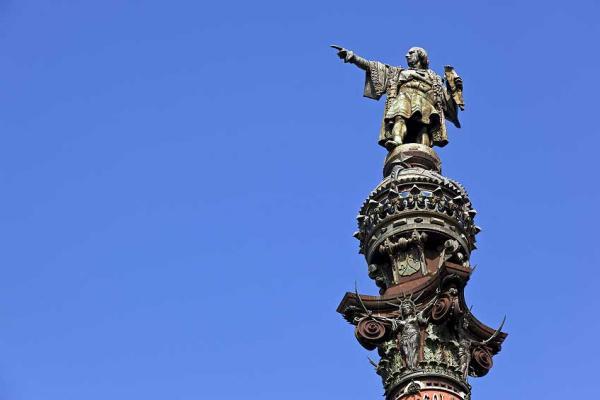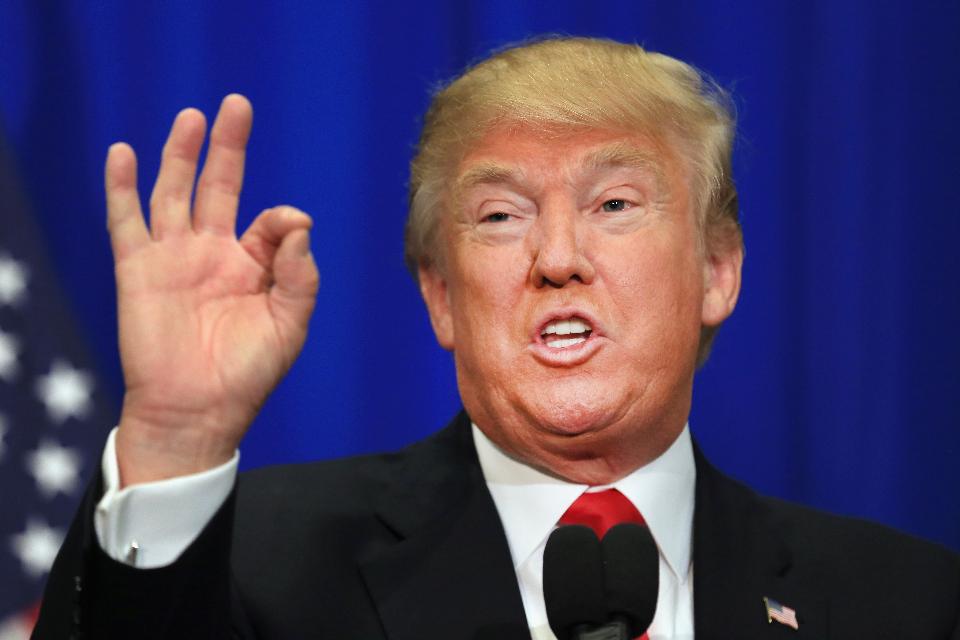Hightime to re-examine what we know about the famed explorer. The accomplishments of Christopher Columbus are myriad and well-known, but much of his life’s story, as well as his subsequent voyages to the Americas, is lost in mythos and misconception.
While he did in fact “sail the ocean blue” in 1492, the biography of Christopher Columbus is filled with obscure facts and historical oddities into most of the textbooks. Many people still believe that Columbus set out from Spain to prove the Earth was round – but we know he didn’t. We also made to believe he made peaceful contact with the natives of what he thought was India – but he didn’t and actually believed he’d reached the mythical land of Japan.
Could he have even made it there? What about his other trips to the New World? Or his revisionist reputation for brutality and cruel treatment of the natives?
Find out some of the answers here:
Christopher Columbus wasn’t actually Christopher Columbus

The famed explorer was born Cristoforo Colombo – or Cristóbal Colón, if you speak Spanish. “Christopher Columbus” is the Anglicised version of his name, but he likely wouldn’t have answered to that. Among other unknowns about Colón/Columbus’s life is what he looked like – as no portrait of him was painted during his lifetime.
He wasn’t Spanish – though he sailed for Spain

Columbus sailed under the Crown of Spain, but definitely wasn’t Spanish by birth. Little is known of his early life, but it’s generally agreed upon that he was born in Genoa, at the time an independent city-state and satellite of Spain. He would be considered Italian today.
Few people still believed the world was flat

Writers like Washington Irving have implanted in the popular consciousness that Columbus set out to prove Catholic teaching wrong about the Earth being flat. But it was already widely believed that the Earth was round. As early as the sixth century BCE, the Greek mathematician Pythagoras used mathematics to surmise the world was round, and later, Aristotle proved it with astronomical observations. By 1492 most educated people knew the planet was not a flat disc.
Columbus was not Searching for the New World

While Columbus found the unexplored land that came to be known as “the New World,” it wasn’t what he was looking for. He was seeking a quicker passage to Asia that wouldn’t involve crossing the Silk Road, which had been sealed off due to the Fall of Constantinople in 1453 to the Ottoman Empire. The aims of his voyage were exploiting the gold and spices believed to be found in abundance in the Orient – and to grab some for himself.
He never would have made it to Asia

Columbus estimated that the distance from the Canary Islands, where his voyage began, to Japan (the then “Cipangu”), which he was attempting to reach, was about 3,700 kilometers. This was a vast underestimate, as the distance is actually about 12,000 kilometers. Columbus’s small fleet could never have carried enough provisions to last such a voyage, nor would these ships have survived the harsh conditions of the Pacific.
His motives were not altruistic

His first proposal to sail to the Orient, submitted to King John II of Portugal, involved him walking away with quite a bounty. He requested to be given the title “Great Admiral of the Ocean,” to be appointed governor of any and all lands he discovered, and be given one-tenth of all revenue from those lands – which would have involved a huge amount of gold. Portugal rejected this proposal, and several others, before Spanish monarchs Ferdinand and Isabella agreed to fund Columbus. But even they rejected him at first, thinking his plan unfeasible.
Columbus certainly wasn’t the 1st European to find the new world

Historians generally believe that the Norse Viking Leif Eriksson landed in present-day Newfoundland around 1000 CE, 500 years before Columbus set sail. It’s also been hypothesised, though not proven, that Celtic explorers crossed the Atlantic before Eriksson.
Nobody knows exactly where Columbus landed

Columbus was looking for Japan, but what he found was the modern day Bahamas. After leaving the Canary Islands on September 6, strong winds pushed his three-ship fleet westward until they sighted land on October 12. Columbus called this island “San Salvador” – and believed he’d found Asia. The exact location of where he first set foot is still unknown, though it’s been narrowed down to three possible islands.
As soon as he landed, he started doing horrible things

Columbus’ actions as a slave trader and by-the-sword evangelist are starting to become more and more widely known in popular culture. And these actions started almost immediately. The first natives he encountered on San Salvador were the Arawak people (also called the Taino), natives to the islands. Columbus found them to be peaceful and loving – and promptly took a group of them prisoner so he could interrogate them as to the location of the Orient’s gold. Subsequent Spanish colonisation of the Bahamas was brutal to the Arawaks and within half a century, they’d almost all be gone.
Not all three ships survived the voyage

Columbus and his crew, which had dwindled to due disease and mutiny, spent three months sailing up and down the Bahamas, from October 12 through January 15, 1493. But it’s not common knowledge that the Santa Maria didn’t survive the trip, having grounded on Christmas Day. Columbus ordered the ship evacuated and blown up with cannons – to impress the natives with Spanish firepower. Columbus then snapped up about two dozen natives to take back as slaves, left 39 men to establish a colony on what’s now Haiti, then headed back to Spain.
The second voyage of Columbus was all about conquest

Columbus’s first voyage to the Orient was a trip of exploration. But the second could never be mistaken for anything other than one of colonisation and, if necessary, armed conflict. He left Spain on September 23, 1493, with a huge fleet consisting of 17 ships and 1,200 men. Among the passengers were farmers, priests meant to convert natives to Christianity, and armed soldiers to impose Columbus’s will.
His third voyage ended in disgrace

Several months of exploring South America left Columbus in poor health and exhausted, so he returned to the colony of Hispaniola, where the Santa Maria had grounded on the first voyage. When he arrived, he was greeted by chaos.
After his death, his remains traveled the world

Food poisoning on one of his voyages led Columbus to develop a case of reactive arthritis, thought at the time to be gout. Suffering from that, as well as various other ailments he contracted during the four voyages, Columbus died in 1506 in Valliadolid, Spain.
Colonisation of the New World also leaves a complex legacy. It wiped out native peoples from San Salvador all the way through the American west – but at the same time, set in motion the events that would lead to the United States and the modern world. Is Columbus a hero or a villain? A conquering monster or a courageous pioneer? In reality, probably all of them.
Sourced from Agencies, Featured Image Courtesy: dreamstime.com
To know more click here: http://www.ranker.com/list/christopher-columbus-facts/mike-rothschildutm_source=facebook&utm_medium=historypost&utm_campaign=christopher_columbus_facts
























